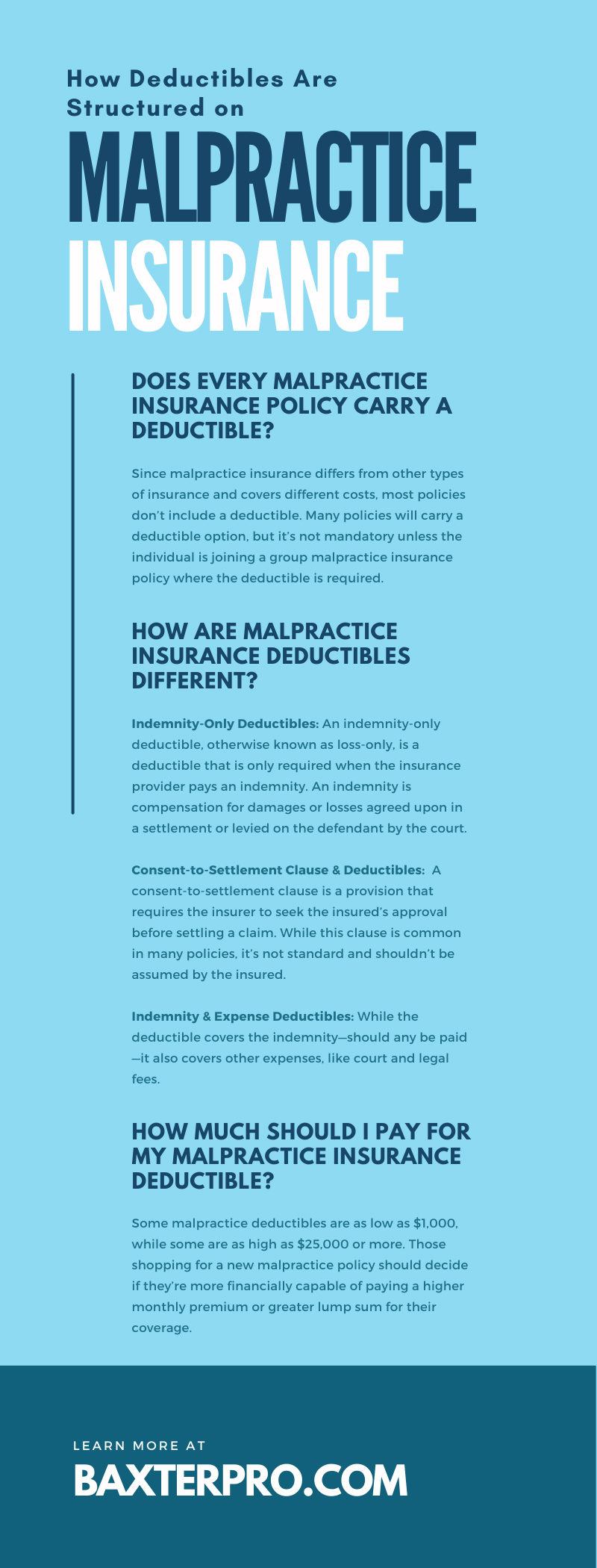Risk assessment is an integral part of insurance. Insurance carriers categorize potential policies by risk, affecting premiums, coverage, and all other parts of the policy. In this guide, we’ll examine the risk classifications for malpractice insurance, explain the elements of a successful malpractice lawsuit, and more.
How Risks Are Classified in Malpractice Insurance
When attaining malpractice insurance for an individual or group, the insurance carrier will place the policy into one of their risk categories. Below, we’ll highlight the main risk classifications for malpractice insurance and what they mean, so individuals can better understand their policy.
Preferred Risk
The best risk category for a policy to be in is preferred risk. A preferred risk individual or group policy is a medical professional or practice with a lower risk than average of filing a claim.
Medical malpractice liability Insurance providers use stats to determine these classifications—certain specialties and practices are more or less likely to be sued for malpractice than others. Examples of low-risk practices and professions include pediatrics, psychiatry, and general family practice. These aren’t guaranteed risk-free, but they come with the least risk statistically.
Standard Risk
As one could guess, the standard risk classification is the average risk for most malpractice policies. These individuals and groups are not significantly risky or low-risk and constitute the majority of medical malpractice policies.
Most medical professionals would fall into this category—typically registered nurses to physicians and specialists. But while an individual may work in a standard risk job, if they have a history of malpractice or prior lawsuits, they may be bumped into the impaired risk category.
Impaired Risk
Lastly, the policies considered the riskiest are placed in the impaired category. The insurance carrier considers an impaired risk to be an individual or practice that is riskier than the average but not such a liability that they’re not worthy of a policy.
Those that fall in the impaired risk category are typically those that work in specialties with the highest rate of malpractice claims, which include:
- • Plastic surgeons
- • Cardiovascular surgeons
- • OB-GYNs
- • Urologists
Surgeons are often classified as impaired risks because they’re common targets for malpractice claims.
The Elements of a Successful Malpractice Claim
Along with understanding the risk classifications, it’s also wise to understand the basic elements of a malpractice claim. For a malpractice lawsuit to be successful, it must prove four elements—a duty owed to the patient, a breach of that duty, injury caused by the breach, and damages.
These elements are sometimes called the four Ds: Duty, Dereliction, Direct Cause, and Damages.
Duty Owed to Patient
The first element that a malpractice lawsuit must prove is that the defendant had a duty of care to the patient (plaintiff). A primary physician has a duty to provide competent and careful treatment and diagnosis to the patient, and a surgeon has a duty to perform the surgery competently to the best of their abilities.
A patient who suffers injury can’t simply sue whoever they want to and expect them to be held responsible if they did not have a duty of care. This element is typically the easiest part of the malpractice suit to prove and is generally uncontested by the defendant.
Breach of Duty
Once the defendant’s duty of care to the plaintiff is proven, the lawsuit must also establish that there was a breach (otherwise known as dereliction) of duty. This element is much harder to prove as it must show the defendant deviated from their duty and failed to fulfill their obligations.
Examples of breach of duty include misdiagnosing a patient, prescribing the wrong type of medication, or making surgical mistakes. Since understanding the core duties of medical treatment requires a lot of education and skill, expert witnesses and testimony are typically needed to establish whether the defendant breached their duty.
Injury Caused by Breach
If the breach of duty is proven, then the case can move to prove that the plaintiff suffered an injury due to the cause of the breach. In medical malpractice, it’s not enough that there was a mistake, but it must be proven that the mistake caused harm.
A plaintiff may claim that a misdiagnosis caused injury, but the defendant may point to pre-existing conditions or other circumstances that caused the injury, not the breach of duty. In some cases, though, this element can be obvious—like if a surgeon leaves a surgical instrument in the patient (which happens more than you think), that’s a clear line from breach of duty to injury.
Damages
Lastly, the plaintiff must prove that damages resulted from the injury caused by the breach of duty. In some cases, a mistake was made and caused injury, but the damages weren’t significant enough to reward compensation.
Damages are placed into two groups: special and general. Special damages include lost pay or the cost of corrective surgery when needed. General damages are vaguer and include pain and suffering or loss of quality of life. If a malpractice claim can prove these four elements, they will likely be successful and be rewarded compensation or a settlement with the defendant.
The 4 Cs of Medical Malpractice Risk Reduction
Naturally, its in the best interests of medical professionals and practices to reduce risk as best they can. There are many strategies for reducing risk in healthcare, but the core elements are sometimes called the four Cs: compassion, communication, competence, and charting.
Compassion & Communication
Compassion is vital in developing the doctor-patient relationship and avoiding strife that can result in a malpractice lawsuit. One of the most common reasons patients and families pursue litigation is that they felt mistreated or disrespected by the individual—so if a doctor shows compassion and understanding, they’re more likely to receive it from patients and families if a negative result occurs.
Communication is also crucial in avoiding malpractice litigation. For one, proper communication with staff helps avoid mistakes like delayed diagnosis and incorrect prescription drug administration. Communicating with patients and families also helps them understand better what’s happening and why and makes them feel heard instead of ignored.
Competence & Charting
Of course, healthcare professionals must be competent if they want to avoid malpractice litigation. But competence also refers to physicians not going past their area of expertise—consulting with colleagues and referring patients to specialists when needed.
Lastly, charting (or documentation) helps to improve communication and is useful in potential litigation. For one, it provides a written record of everything that’s happened to the patient and gives healthcare professionals the most up-to-date information regarding the patient for quality and safe care.
Conclusion
If you’d like to learn more about medical malpractice liability risk for individuals and practices, our helpful staff is eager to answer all your questions and can help you find the ideal malpractice insurance policy for you.








